- Undersea cables are critical to global communication, handling over 99% of international internet traffic and supporting everything from cloud computing to financial transactions.
- The undersea cables are made of optical fibres surrounded by multiple protective layers, including armouring for physical protection against environmental threats and human interference.
- Despite their robust design, undersea cables face challenges such as natural disasters, human activities, and cybersecurity threats, requiring continuous monitoring and advanced technology to maintain their reliability.
Undersea cables are essential to the global communications network. These massive networks of fibre-optic cables stretch across the world’s oceans, linking continents and enabling high-speed data transfer. Nearly 99% of international internet traffic travels through undersea cables, meaning that these cables are the true backbone of modern digital communication, from internet browsing to cloud computing and international financial transactions.
Also read: What are subsea cables?
Also read: Southern Cross and Ciena claim first 1TB/s transpacific cable link
- What are undersea cables made of?
- The role of undersea cables in global communication
- Who owns undersea cables?
- The longest and deepest undersea cables
- The installation process: how undersea cables are laid
- The vulnerabilities of undersea cables
- The future of undersea cables in a changing global landscape
- Securing the future of global connectivity
- FAQ
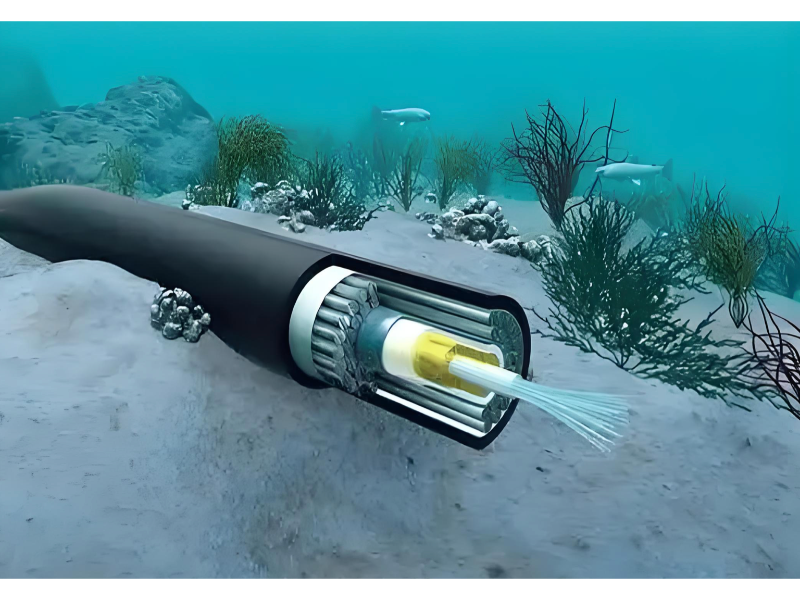
What are undersea cables made of?
Undersea cables are highly sophisticated and designed to withstand extreme conditions. They are made up of several layers that together ensure the safe and efficient transmission of data over vast distances.
Core: optical fibres for data transmission
The core of an undersea cable consists of optical fibres that are made of glass or plastic. These fibres are used to carry data in the form of light signals. The light signals travel along the fibres at very high speeds, allowing for data transfer with minimal loss of quality over great distances. Optical fibres are capable of transmitting much more data compared to traditional copper wires, making them ideal for modern telecommunications.
Also read: Understanding optical fibre: A beginner’s guide
Also read: The pioneers of fibre optic technology: Unveiling the inventors
Insulation and protection
The optical fibres are fragile and vulnerable to damage from the environment, so they are protected by multiple layers of insulation. The first layer consists of a polymer coating that shields the fibres from moisture, which is crucial in underwater conditions. This layer also protects against temperature variations and the physical pressures of deep-sea environments.
Armouring and strengthening layers
In areas with high potential for physical disruption, such as shipping lanes or fishing zones, the cables are wrapped in additional armouring made of steel or other strong metals. These layers help prevent damage from anchors, fishing nets, and other underwater hazards. In areas with particularly high risks, cables may have multiple layers of metal, offering extra protection to ensure the cables remain intact.
International banking institutions process over $1 trillion per day via undersea cables. Any disruptions of these cables would severely impact global banking.
Douglas Burnett, legal expert on undersea cables
The role of undersea cables in global communication
Undersea cables are responsible for the lion’s share of global data transfer, facilitating much more than just internet access.
Enabling internet access worldwide
The primary function of undersea cables is to provide internet connectivity between countries and regions. These cables form a crucial part of the infrastructure that connects nations and regions, enabling high-speed broadband and allowing people around the world to access websites, social media, streaming platforms, and much more.
Undersea cables are particularly important for island nations or countries that are geographically isolated, as they allow these regions to access the global internet backbone. Without undersea cables, many areas of the world would either have no internet access or very limited, expensive, and slow connectivity.
Also read: Google announces two new subsea cables for Indo-Pacific connectivity
Also read: AFR-IX telecom unlocks Africa’s business potential with submarine cables
Supporting international communication
Undersea cables are the primary channels for international phone calls, video conferencing, and other forms of communication. Long-distance communication between continents relies heavily on these cables, which have enabled global business operations, multinational companies, and international cooperation.
Facilitating financial transactions
The undersea cable network is essential for the global financial system. Financial institutions, banks, and stock exchanges rely on these cables to process transactions in real-time. Undersea cables handle massive amounts of data, including money transfers, stock market trading, and electronic payments, ensuring the smooth operation of global financial markets.
Supporting cloud computing and data centres
With the rise of cloud computing, undersea cables have become even more critical. Cloud services require vast amounts of data to be transferred between data centres located around the world. These centres rely on undersea cables to store, access, and process data quickly and securely, supporting everything from corporate data storage to streaming services and online gaming.
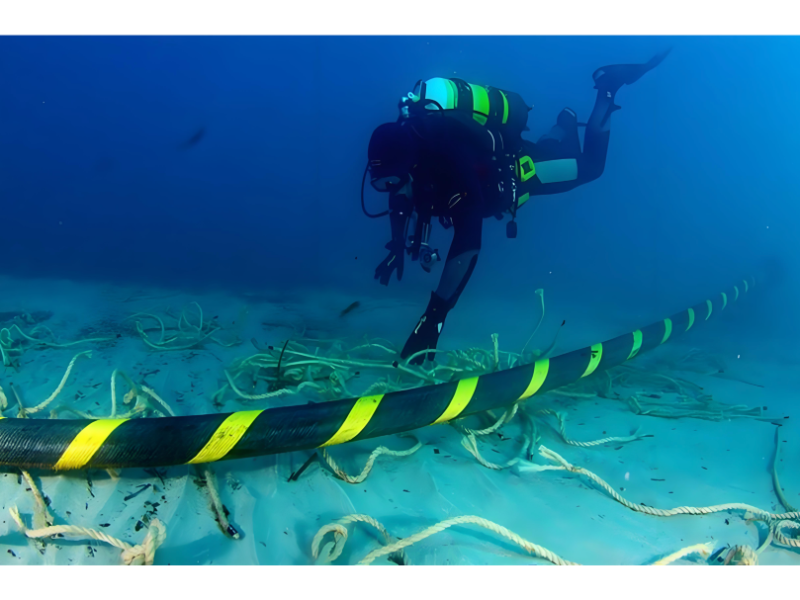
Who owns undersea cables?
Ownership of undersea cables is a complex matter, as these cables are often shared by a variety of stakeholders, including private tech companies, telecom providers, and even governments.
Private tech companies and consortiums
In recent years, major tech companies like Google, Facebook, Amazon, and Microsoft have invested heavily in the construction and maintenance of undersea cables. These companies have recognised the importance of controlling their own networks to ensure faster and more reliable data transfer for their services, from cloud computing to social media platforms. Often, these tech giants collaborate in consortiums, pooling resources to build and operate cables that serve their mutual interests.
Telecom operators and national governments
Alongside private companies, telecom operators and governments are also major players in undersea cable ownership. National telecom providers often build and operate cables to ensure stable connectivity within their territories, while governments may invest in international cables to promote global communication and trade.
The increasing trend towards private ownership and consortium-based partnerships raises important questions about the control of global data infrastructure. Concerns about security, surveillance, and monopolistic practices are growing, as the companies and countries that own and operate these cables hold significant influence over global communications.
If the world’s 223 international undersea cable systems were to suddenly disappear, only a minuscule amount of this traffic would be backed up by satellite, and the Internet would effectively be split between continents.
Nicole Starosielski, American researcher, professor at the University of California
The longest and deepest undersea cables
The development of undersea cables has led to some impressive feats of engineering, including the construction of the longest and deepest cables ever built.
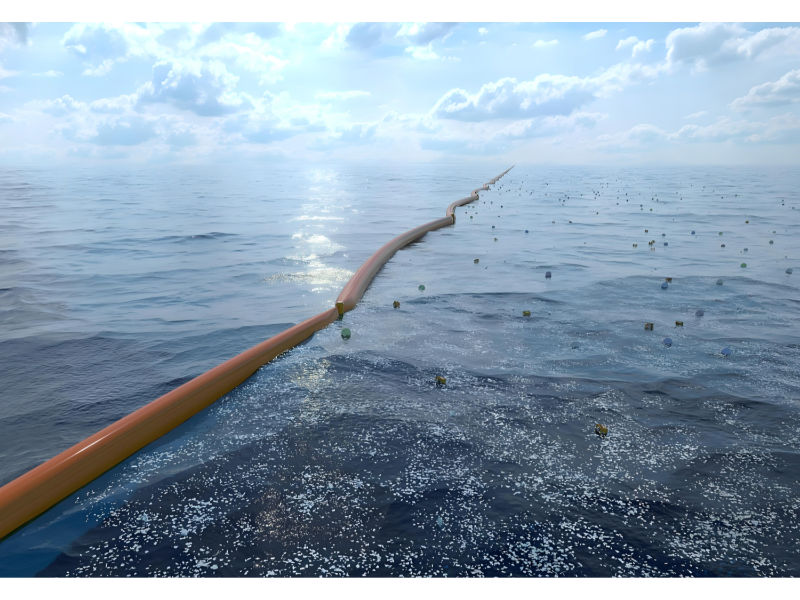
The longest cable: 2Africa
The 2Africa undersea cable, which is set to be the longest in the world, will stretch over 45,000 kilometres, connecting 23 countries in Africa, the Middle East, and Europe. The 2Africa project is a major initiative to improve internet access in Africa, providing fast, reliable connectivity to one of the world’s fastest-growing markets. This ambitious cable will also improve access to cloud services and digital education, boosting the region’s economy and supporting technological growth.
Also read: 2Africa: The world’s longest subsea cable
Deepest cables in the Mariana Trench
Undersea cables have also been laid in some of the world’s deepest and most difficult locations, including the Mariana Trench. These cables are built to withstand the intense pressure and extreme conditions found at depths of over 10,000 metres. The cables in these deep-sea regions have advanced materials and reinforced armouring to ensure they can operate without failure, even in the most challenging environments.
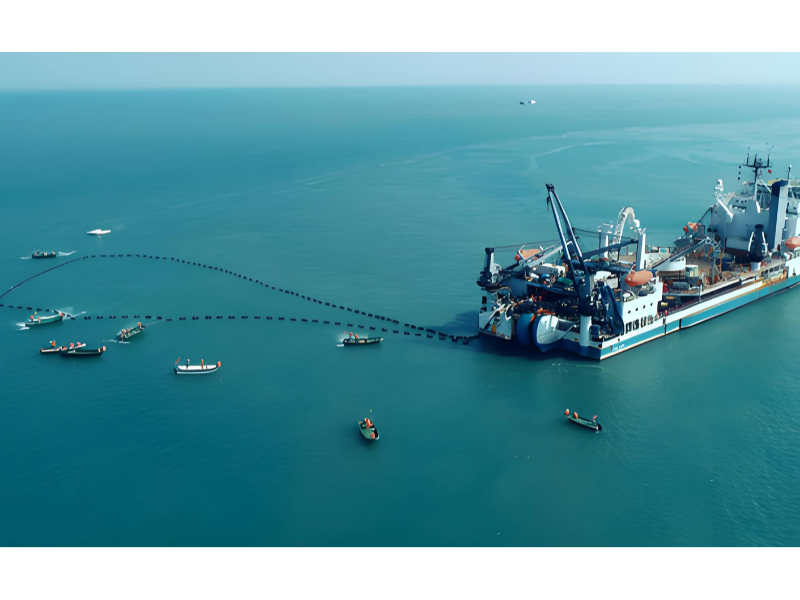
The installation process: how undersea cables are laid
Installing undersea cables involves an intricate, carefully coordinated process that requires advanced technology and specialised vessels.
Surveying the ocean floor
Before laying the cable, detailed surveys of the ocean floor are conducted using sonar and other underwater mapping technologies. This allows engineers to identify the safest and most efficient route for the cable, avoiding underwater mountains, existing cables, and other potential hazards. These surveys also help identify regions with unstable geology, such as fault lines or areas prone to earthquakes.
Laying the cable
Once the route is determined, the cable is transported by specialised cable-laying ships. These ships are equipped with dynamic positioning systems that allow them to stay precisely on course while laying the cable on the ocean floor. The process is carefully monitored, and remotely operated vehicles (ROVs) may be deployed to assist in the installation or to make adjustments as needed.
Protection and monitoring
After the cable is laid, it is monitored for any potential damage or faults. In areas where cables are at risk of being damaged, they are buried beneath the ocean floor using special ploughing equipment. This helps prevent damage from fishing activities, ship anchors, or other human interference.
The vulnerabilities of undersea cables
Despite their robust construction, undersea cables are vulnerable to a variety of threats.
Also read: Damaged Internet subsea cables are being repaired in Red Sea
Also read: How IPTP Networks overcame Red Sea cable crisis with terrestrial solutions
Natural hazards: earthquakes, tsunamis, and more
Undersea cables are at risk from natural events such as earthquakes, tsunamis, and volcanic eruptions. For instance, the 2006 earthquake off the coast of Taiwan caused extensive damage to undersea cables, disrupting internet and communication services across Asia. As the world’s oceans continue to experience seismic activity, undersea cables must be designed to withstand these forces, with engineers continually monitoring and reinforcing the cables to ensure they remain intact.
Human activities
Human interference is another major risk. Fishing vessels often accidentally damage cables, while ship anchors can cause significant disruption. Furthermore, malicious activities, such as cyberattacks targeting cable infrastructure, pose new challenges. Given the importance of undersea cables to the global economy, protecting them from damage and cyber threats has become a priority.
The U.S. administration should undertake a review of existing vulnerabilities to global undersea cable infrastructure, including the threat of sabotage by Russia as well as the growing role of the People’s Republic of China in cable laying and repair.
A bipartisan group of eight U.S. senator
The future of undersea cables in a changing global landscape
As the world’s demand for faster and more reliable internet grows, undersea cables will continue to play a crucial role in shaping the future of global communications. However, their importance extends beyond just technological advancements. The geopolitical implications of undersea cables are becoming increasingly significant, as nations and corporations vie for control over this vital infrastructure.
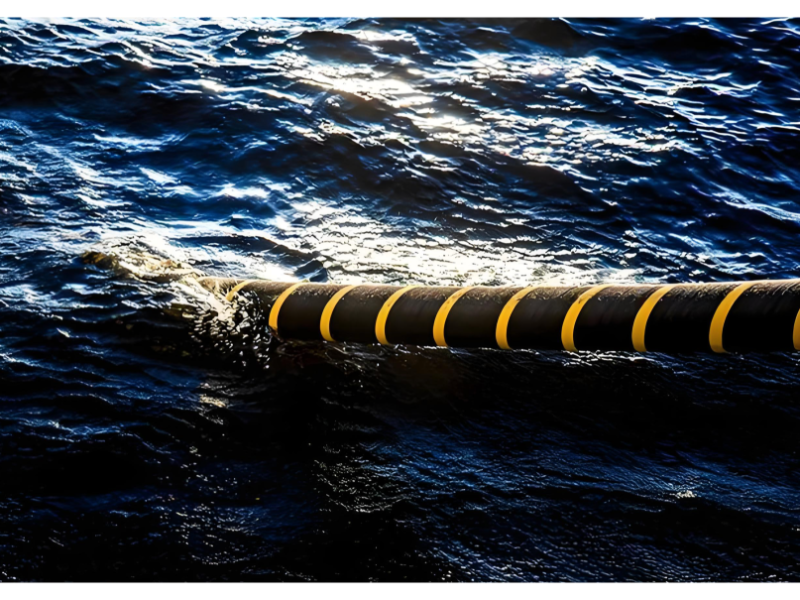
Geopolitical challenges and the global role of undersea cables
Undersea cables have become more than just an essential part of the internet infrastructure—they are now a key element in the broader geopolitical landscape. The ownership, protection, and control of these cables have become points of contention among global powers. Countries with control over key undersea routes gain a significant advantage in terms of global communication and data flow, which can influence economic power, trade relations, and national security.
For instance, tensions between major powers could result in strategic investments in undersea cables, as well as potential disruptions to cable routes. The increasing risk of geopolitical instability and the rise of cyberattacks aimed at critical infrastructure further highlight the vulnerabilities in the undersea cable network. This growing awareness is prompting international collaborations and stronger security measures to ensure the continued functionality and protection of these undersea networks.
Also read: Undersea cables and global tensions: A geopolitical tug-of-war
Also read: AFR-IX telecom unlocks Africa’s business potential with submarine cables
Expanding global connectivity
Undersea cables are expanding, connecting more regions with limited digital infrastructure. These include remote islands, rural areas, and developing nations that have been left behind. As more projects are developed, these regions will benefit from faster internet, better cloud access, and greater economic growth.
Global digital inclusion will remain a key focus, as expanding undersea cables can bridge the digital divide. More high-speed broadband will empower businesses, educators, and communities worldwide, ensuring no one is excluded. Connecting underserved areas will also boost local economies by fostering new businesses and opening global markets.
Advancements in cable technology
Undersea cable technology is advancing rapidly to meet higher data transfer demands and improve resilience. Research into materials and construction methods is making cables more durable and capable of transmitting higher data rates.
For example, hollow-core fibres and cables designed for higher wavelengths will push the limits of what undersea cables can handle. These innovations will support data-intensive applications like 5G networks, IoT devices, and next-gen cloud services. The future of undersea cables will rely on their ability to keep pace with technological demands while staying cost-effective and secure.
Securing the future of global connectivity
As undersea cables evolve and expand, they will play a growing role in global connectivity. Since these cables are international, cross-border cooperation is essential. Governments, companies, and international organisations must work together to protect this infrastructure from natural disasters, cyber threats, and geopolitical tensions.
The resilience of undersea cables will be tested as digital demands increase. However, with advances in technology and security, they are well-positioned to remain the backbone of global communications. Their ability to support the growing digital economy and keep the world connected will be crucial as we move further into the digital future.
FAQ
Undersea cables are networks of fibre-optic cables laid beneath the ocean to connect continents and facilitate global data transfer, supporting internet, communication, and financial transactions.
Undersea cables enable internet connectivity, international phone calls, video conferencing, financial transactions, and cloud computing by transmitting vast amounts of data across oceans.
Undersea cables are owned by a mix of private tech companies, telecom providers, and governments, often through consortiums, reflecting the global importance of these communication channels.
The 2Africa cable, covering over 45,000 kilometres, will be the longest, connecting 23 countries across Africa, the Middle East, and Europe, providing improved internet access.
Undersea cables face threats from natural hazards (earthquakes, tsunamis), human interference (fishing, ship anchors), and cyberattacks, which can disrupt global communications and data flow.

